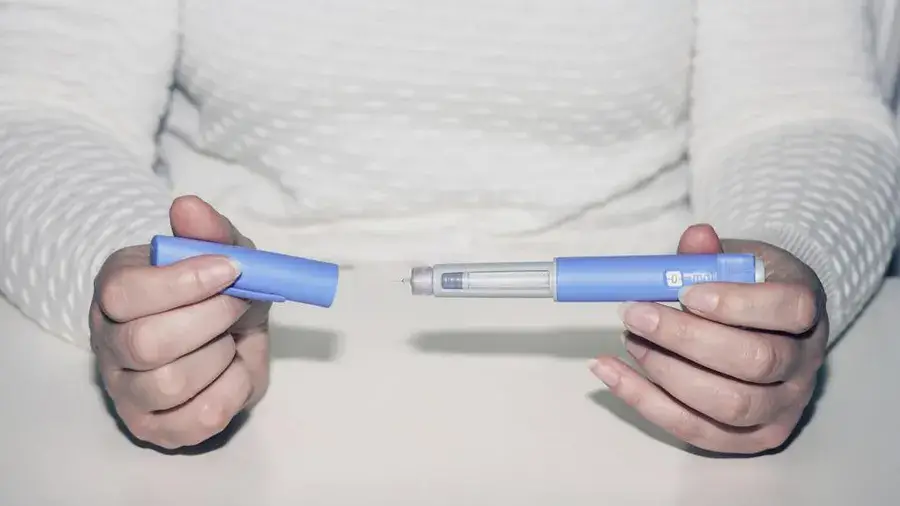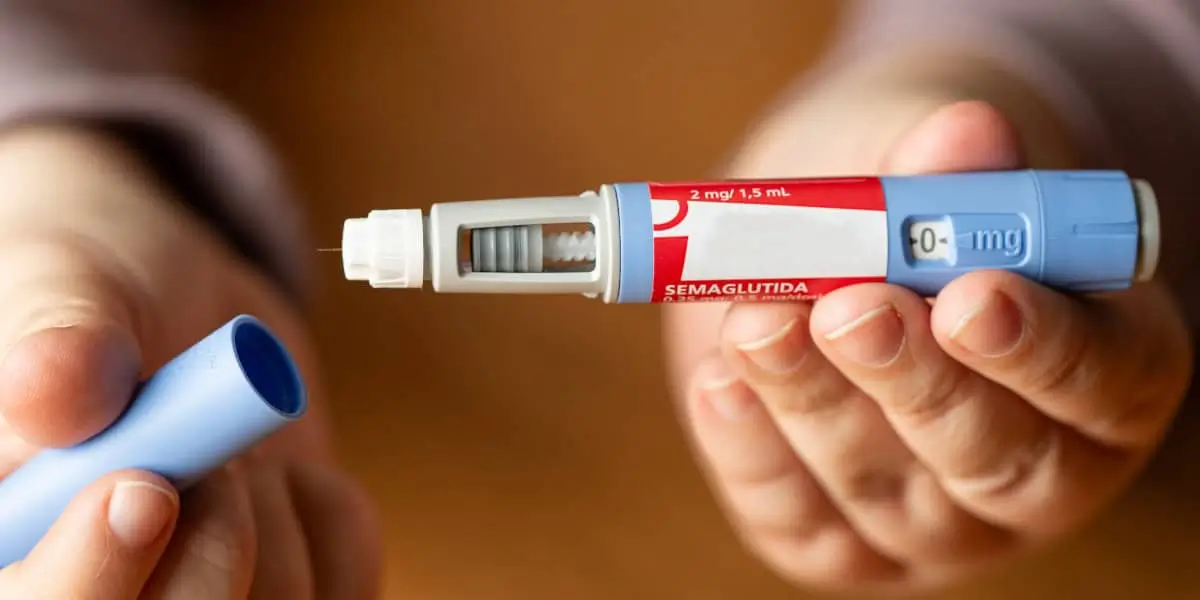
Obesity is a chronic condition affecting millions around the world, and for many, lifestyle changes alone don’t lead to long-lasting results. That’s where Ozempic comes in. Originally developed to help people with type 2 diabetes manage their blood sugar, Ozempic has recently gained attention for its ability to help with weight loss, with clinical trials showing an impressive average reduction of nearly 15% of body weight at the recommended obesity-management dose.
Although Ozempic is FDA-approved for diabetes, more and more patients and healthcare providers are exploring how it can be used to maximize weight loss. One of the most important factors to getting the best results with Ozempic is taking it consistently at the right time each week. Doing so can help you achieve steady progress and better manage any side effects.
In this article, we’ll dive into when the best time to take Ozempic is, so you can make the most of its benefits and stay on track with your treatment.
Key Takeaways
- Establishing a regular weekly injection schedule is essential for maximizing the benefits of Ozempic. Choose a specific day each week to take your dose and stick to it for the best results.
- Ozempic can be taken at any time of the day, whether in the morning or evening, as long as you stay consistent with the timing each week. This flexibility allows you to fit your injections into your routine.
- The abdomen, thigh, and upper arm are all suitable for injections. Rotate sites each week to avoid irritation or discomfort.
- The timing of your injection can help minimize side effects like nausea and digestive discomfort. Evening doses may help you sleep through mild symptoms, while morning doses allow you to monitor side effects throughout the day.
- If you miss a dose, take it within 5 days of the missed time. If more than 5 days have passed, skip the dose and continue with your regular schedule. Avoid doubling doses to “catch up.”
- Regular adherence to your Ozempic regimen is essential for achieving both blood sugar control and weight management benefits.
About: Doctor Medica is your trusted supplier of top-quality dermal fillers, viscosupplements, and more for your medical practice. We offer genuine products from leading brands at the lowest prices in the market. If you’re looking to order Ozempic online for your practice, contact Doctor Medica today.
Best Time to Take Ozempic: Recommended Weekly Injection Schedule

Establishing a consistent injection routine is essential for maximizing the benefits of Ozempic (semaglutide). Since the medication works best when maintained at steady levels in the body, sticking to a weekly schedule is crucial for improving both blood sugar management and appetite control. While its flexible dosing makes it convenient, consistency and structure are key to achieving long-term results.
To help you create a sustainable habit, follow these simple guidelines:
- Pick one day each week (e.g., Sunday or Monday) for your injections. This consistency helps you build a habit and minimizes the risk of forgetting doses.
- Link your injection time to a regular weekly activity, like your morning coffee or a weekly appointment. This connection reinforces the habit and makes it easier to stay on track.
- Avoid shifting your schedule unless you’ve missed a dose. Consistency is essential to ensuring stable semaglutide levels in your system, which is key to maximizing the medication’s effectiveness.
When it comes to where you administer the shot, there are a few options to consider:
- Effective absorption can be achieved when injecting into the abdomen, thigh, or upper arm. Although the abdomen may offer slightly faster uptake, this difference is not clinically significant when it comes to weekly dosing.
- Change the injection spot each week to prevent issues like irritation, bruising, or lipohypertrophy (localized fat build-up). Rotating between sites reduces the risk of discomfort from sticking to the same spot week after week.
By following this structured approach, you’ll not only support optimal glycemic control but also enhance the medication’s secondary benefits, such as appetite suppression and weight management. Turning your Ozempic dose into a weekly ritual helps create a sustainable path toward achieving long-term health outcomes.
Best Time to Take Ozempic: Time of Day Considerations

One of the benefits of Ozempic is its flexibility—there’s no strict rule requiring it to be taken in the morning or evening. This allows patients to choose a time that fits their daily routine and comfort level. The goal is to select a time you can consistently commit to each week while minimizing potential side effects.
- Morning Injections: Ideal for those who prefer starting the day with their dose. This timing also gives you the opportunity to monitor potential side effects, such as mild nausea, throughout the day. You can adjust meals or activities if needed, helping you manage any discomfort.
- Evening Injections: Convenient for people with busy mornings or those who want to align their dose with the end of the workday. Evening dosing can also help some patients sleep through mild digestive discomfort, which may be easier to manage during the night.
- With or Without Food: Ozempic does not require coordination with meals. It can be injected on an empty stomach or after eating, giving you the flexibility to adjust your schedule without affecting its efficacy.
Whether it’s your morning coffee, a weekly meeting, or bedtime, attaching the dose to an existing habit helps improve adherence. The best time to take Ozempic is the time you can maintain consistently. Whether it’s sunrise or bedtime, steady weekly dosing is what ensures stable drug levels and long-term effectiveness.
Best Time to Take Ozempic: Impact on Side Effects and Patient Comfort
The timing of your Ozempic dose can influence how well you tolerate side effects, particularly during the first few weeks or when your dose increases. Common issues such as nausea, decreased appetite, and mild gastrointestinal discomfort can often be managed by adjusting your injection schedule and daily habits.
If nausea occurs, try scheduling your injection in the evening so peak effects happen while you’re asleep. This can reduce the time you’re actively aware of stomach upset and make side effects more manageable. For minimal disruption, consider a weekend morning injection, giving yourself more flexibility to rest or adjust your activities if mild side effects occur.
Drinking plenty of water and eating smaller, more frequent meals on injection day can help ease digestive discomfort. Avoid heavy, greasy foods immediately after your dose to minimize stomach upset. Following your prescriber’s step-up schedule helps your body adjust to the medication, minimizing gastrointestinal side effects and improving long-term tolerance.
Keep a simple log of when you take your injection and how you feel afterward. Over time, this helps you identify the timing that works best for your comfort. Choosing the right time to take Ozempic isn’t just about convenience—it’s about maximizing comfort, minimizing side effects, and making the medication a sustainable part of your routine for long-term results.
Best Time to Take Ozempic: Missed Dose Protocol and Adjustment Guidelines
Even with the best intentions, busy schedules can lead to an occasional missed Ozempic injection. Understanding how to manage a missed dose is key to maintaining consistent blood sugar control and appetite regulation. Whether you’re new to the medication or already familiar with how it works, proper adjustment helps maintain steady results.
If you miss a dose:
- Within 5 days of your missed dose, administer the dose as soon as you remember, then return to your regular weekly schedule. This ensures you don’t leave extended gaps that could affect drug levels.
- If more than 5 days have passed, skip the missed dose entirely and wait until your next scheduled injection day. This prevents overlapping doses, which could increase the risk of side effects.
- Avoid doubling doses. Injecting extra medication to “catch up” can lead to unwanted side effects without offering additional benefits.
Set reminders by using alarms, calendar alerts, or your regular weekly routines to reduce the chances of missing a dose in the future.
Following these guidelines ensures steady semaglutide levels, supports your treatment goals, and minimizes discomfort. Consistency, not overcompensation, is the safest way to stay on track with Ozempic therapy.
Furthermore, some may be wondering, “Are Wegovy and Ozempic the same?” Although they both contain semaglutide, they have different approved uses and dosing regimens, making it important to follow your prescribed plan for the best results.
Conclusion
The best time to take Ozempic ultimately depends on personal routine, tolerance, and medical guidance. While morning or evening dosing both work, the priority is consistency; same day, same time each week. Whether your goal is blood sugar control or weight loss, steady adherence maximizes results.
FAQs
1. Can I take Ozempic at night?
Yes, you can take Ozempic in the evening. Choose a time that fits your routine and allows weekly consistency. Some prefer night dosing to sleep through potential nausea.
2. Does it matter if I take Ozempic before or after meals?
No, Ozempic works regardless of food timing. You can inject before or after meals without affecting efficacy.
3. What happens if I take Ozempic a day late?
If you are within 5 days of your scheduled dose, take it as soon as possible. Otherwise, skip it and continue with your regular schedule.
4. Who should decide the best time for me to take Ozempic?
Your healthcare provider should guide timing based on your health goals, side effect tolerance, and lifestyle factors.
References
Sheer AJ, Donahoo WT, Johnson-Mann CN. Medically supervised weight loss and effects of anti-obesity medications. In: Sudan R, Brethauer SA, Morton JM, eds. The SAGES Manual of Metabolic and Bariatric Surgery. Cham: Springer Nature Switzerland; 2024:155-175.
Hong B, Kim H, Lee D, Kim K. Weight Loss Effects of Once-Weekly Semaglutide 2.4 mg in Adults with and Without Type 2 Diabetes: A Systematic Review and Meta-Analysis. Pharmaceuticals. 2025;18(7):1058. doi:10.3390/ph18071058
Coutinho W, Halpern B. Pharmacotherapy for obesity: moving towards efficacy improvement. Diabetol Metab Syndr. 2024;16(1):6. doi:10.1186/s13098-023-01233-4
Related Articles
Joanna Carr
Remicade Crohn’s Disease – Is It a Viable Treatment?
Discover how Remicade works in treating Crohn's disease. Review its clinical effectiveness, potential side effects, and role in long-term management o...
Joanna Carr
How Long Does Sculptra Last: Aesthetic Treatment Guide
Have an interest in learning about How Long Does Sculptra Treatment Last? Browse Doctor Medica's extensive archive of blog postings.
Joanna Carr
Meditoxin Botox Review – Patient and Practitioner Experiences
Discover real-world experiences with Meditoxin, as shared by both patients and practitioners. Learn about its efficacy, onset, duration, and satisfact...


